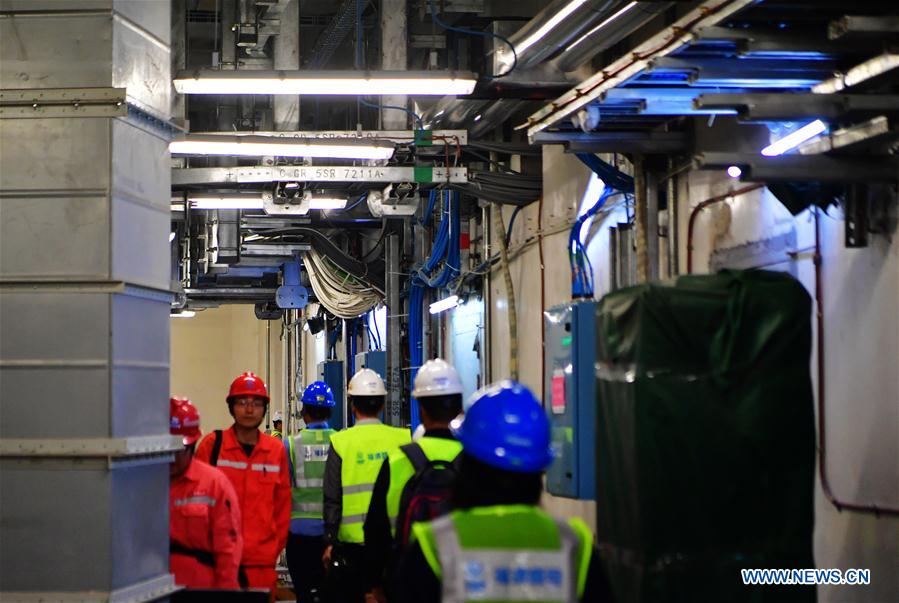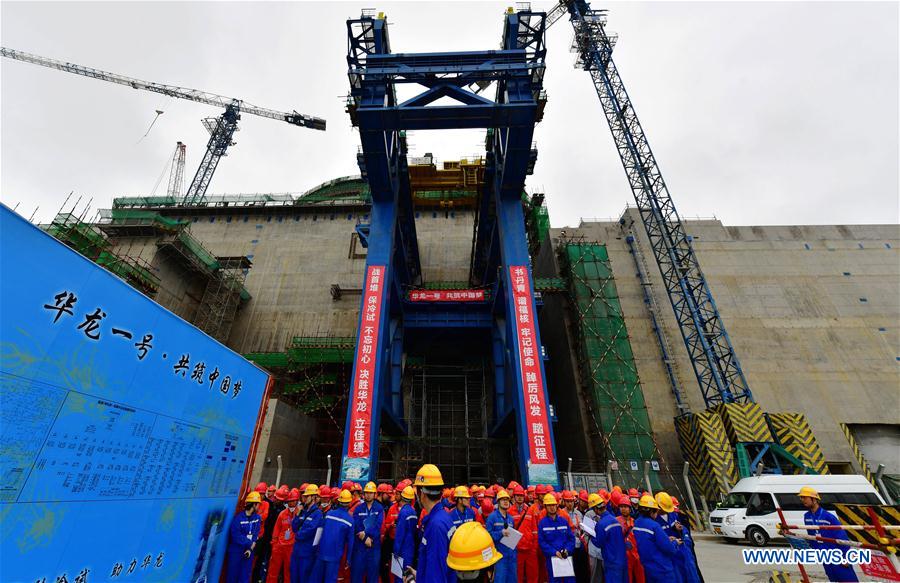Cold functional test starts at China's first Hualong One nuclear project
People's Daily app
1556416929000

Photo taken on April 27, 2019 shows the inside view of the No. 5 nuclear power unit in Fuqing, southeast China's Fujian Province. Cold functional tests began Saturday on a reactor of China's first nuclear power project using Hualong One technology, a domestically developed third-generation reactor design. The test was conducted on a circuit of the No. 5 nuclear power unit in the city of Fuqing, to evaluate the performance of the circuit system and its supporting facilities under high-pressure conditions, according to the China National Nuclear Corporation (CNNC). (Photos: Xinhua)

Technicians work at the main control room of the No. 5 nuclear power unit in Fuqing, southeast China's Fujian Province, April 27, 2019. Cold functional tests began Saturday on a reactor of China's first nuclear power project using Hualong One technology, a domestically developed third-generation reactor design. The test was conducted on a circuit of the No. 5 nuclear power unit in the city of Fuqing, to evaluate the performance of the circuit system and its supporting facilities under high-pressure conditions, according to the China National Nuclear Corporation (CNNC).

Engineers check data at the main control room of the No. 5 nuclear power unit in Fuqing, southeast China's Fujian Province, April 27, 2019. Cold functional tests began Saturday on a reactor of China's first nuclear power project using Hualong One technology, a domestically developed third-generation reactor design. The test was conducted on a circuit of the No. 5 nuclear power unit in the city of Fuqing, to evaluate the performance of the circuit system and its supporting facilities under high-pressure conditions, according to the China National Nuclear Corporation (CNNC).

Technicians observe at the site of the beginning of cold functional tests on the No. 5 nuclear power unit in Fuqing, southeast China's Fujian Province, April 27, 2019. Cold functional tests began Saturday on a reactor of China's first nuclear power project using Hualong One technology, a domestically developed third-generation reactor design. The test was conducted on a circuit of the No. 5 nuclear power unit in the city of Fuqing, to evaluate the performance of the circuit system and its supporting facilities under high-pressure conditions, according to the China National Nuclear Corporation (CNNC).

Photo taken on April 27, 2019 shows the inside view of the No. 5 nuclear power unit in Fuqing, southeast China's Fujian Province. Cold functional tests began Saturday on a reactor of China's first nuclear power project using Hualong One technology, a domestically developed third-generation reactor design. The test was conducted on a circuit of the No. 5 nuclear power unit in the city of Fuqing, to evaluate the performance of the circuit system and its supporting facilities under high-pressure conditions, according to the China National Nuclear Corporation (CNNC).

Photo taken on April 27, 2019 shows the No. 5 nuclear power unit in Fuqing, southeast China's Fujian Province. Cold functional tests began Saturday on a reactor of China's first nuclear power project using Hualong One technology, a domestically developed third-generation reactor design. The test was conducted on a circuit of the No. 5 nuclear power unit in the city of Fuqing, to evaluate the performance of the circuit system and its supporting facilities under high-pressure conditions, according to the China National Nuclear Corporation (CNNC).

An engineer explains the beginning of cold functional tests on the No. 5 nuclear power unit in Fuqing, southeast China's Fujian Province, April 27, 2019. Cold functional tests began Saturday on a reactor of China's first nuclear power project using Hualong One technology, a domestically developed third-generation reactor design. The test was conducted on a circuit of the No. 5 nuclear power unit in the city of Fuqing, to evaluate the performance of the circuit system and its supporting facilities under high-pressure conditions, according to the China National Nuclear Corporation (CNNC).


